About the Center for Spatial-Temporal Modeling for Applications in Population Sciences (CSMAPS)
Welcome. CSMAPS aims to uncover hidden patterns and dynamics within public health data, providing crucial insights across a myriad of public health fields - including infectious disease control, cancer research, mental health research, environmental health, health disparities, chronic disease management, and implementation sciences. Through this multidisciplinary lens, we are able to expose intersections and interdependencies typically overlooked by traditional analyses, offering a comprehensive understanding of population health as a complex, multifaceted phenomenon. The incorporation of implementation science further bridges the gap between research findings and practical application, facilitating the translation of these insights into tangible, impactful public health interventions and preventions.
Mission and Vision
Our mission and vision are founded upon three fundamental principles:
- Innovation and Interdisciplinary Research: We are committed to pioneering the development and application of cutting-edge spatial-temporal data science, enriching our understanding of population health dynamics. By embracing an interdisciplinary approach, we integrate expertise to drive impactful solutions.
- Real-World Impact and Improvement of Health Outcomes: Our ultimate goal is to significantly enhance health outcomes for Texas. We aim to achieve this by transforming our innovative research findings into actionable policies and practices, and by forging strategic collaborations with community organizations, healthcare providers, policymakers, and other stakeholders.
- Dissemination and Support for Public Health Policy-making: We prioritize the broad dissemination of our research insights and the development of user-friendly software tools and visualizations. This approach not only makes complex data and analyses accessible to a wider audience but also supports informed public health policy-making. Furthermore, we are dedicated to bolstering the understanding and use of spatial-temporal modeling techniques among researchers, practitioners, and decision-makers through targeted capacity-building initiatives.
Projects
Population-based Chronic Disease Burden:
Our center develops data analytics and visualization tools to evaluate chronic disease burden and risk across diverse populations.
For example, in a project led by Dr. Bauer, our team developed a Chronic Disease Burden Index (CDBI) to assess county-level chronic disease burden across the U.S. using data from the CDC's PLACES. Additionally, this work quantified the relationship between the Social Vulnerability Index (SVI) developed by the CDC and chronic disease burden. The CDBI serves as a population-level quantitative tool to identify geographic patterns and temporal changes in chronic disease burden, supporting further research on health inequities and improving healthcare access in high-burden, socially vulnerable areas and populations. Further details can be found in the publication resulting from this work.
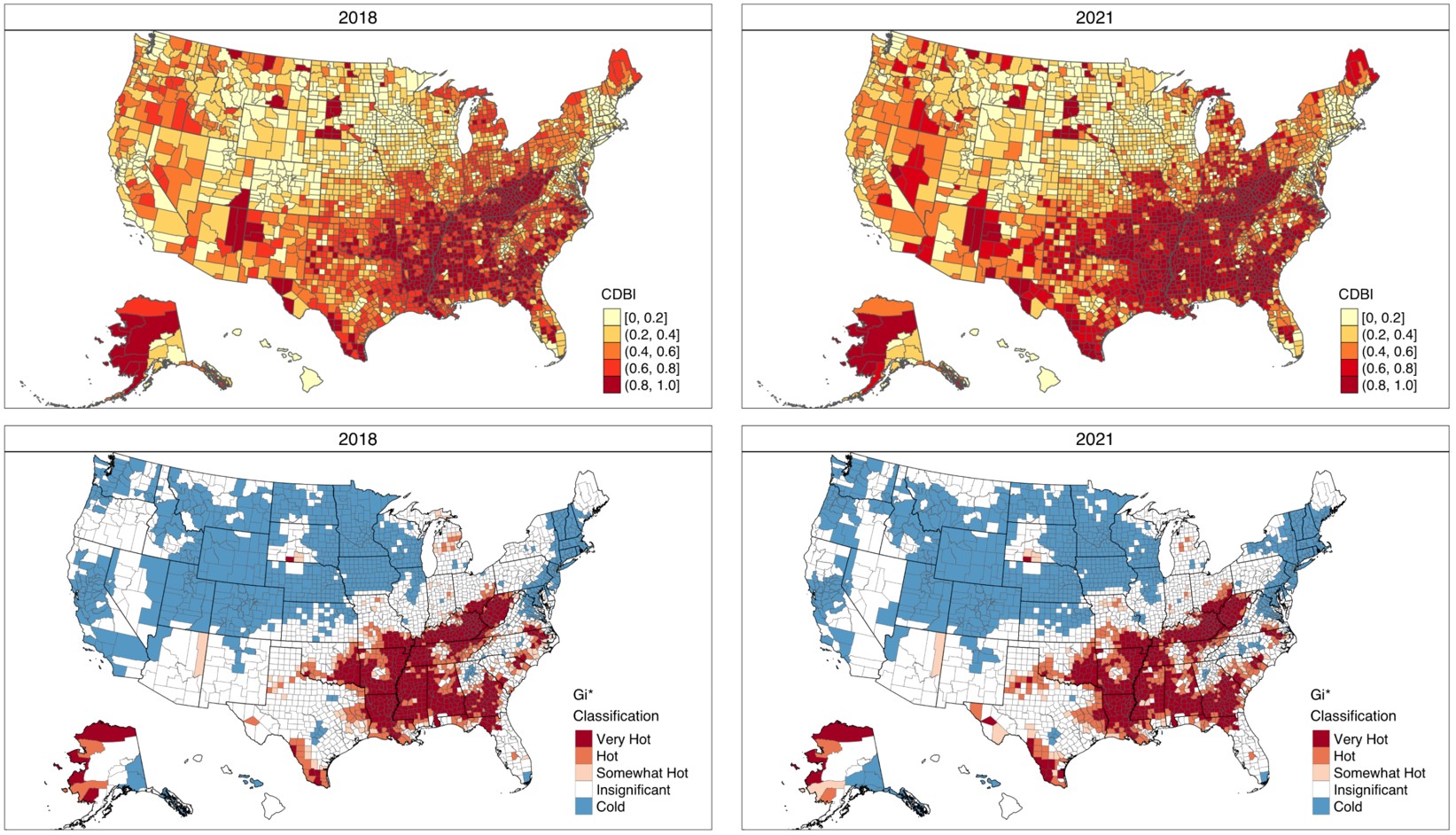
In the figure above, the top maps show the Chronic Disease Burden Index (CDBI) across U.S. counties. The CDBI combines 20 health measures from the CDC’s PLACES data into a single score between 0-1, with darker areas indicating higher disease burden. The bottom maps highlight clusters of counties with significantly high (red) or low (blue) disease burden. These clusters show where disease patterns are concentrated geographically.
In addition, we have developed a public-facing interactive dashboard to assess county-level chronic disease burden and visualize spatial and temporal patterns across the U.S.
Artificial Light at Night (ALAN):
Dashboard link: https://spatiotemporal-data-science.shinyapps.io/ALAN/
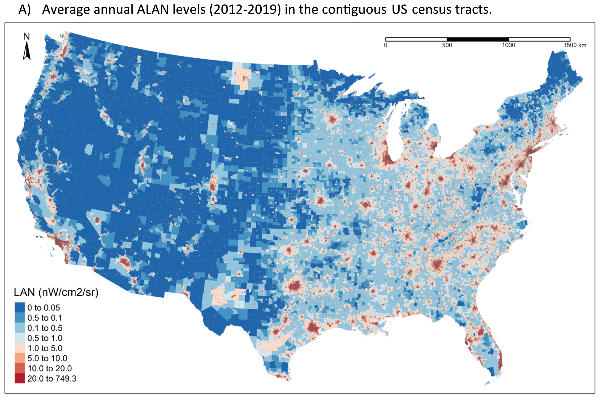
This project is funded by NASA’s Health and Air Quality Applied Science Team Program (PI: Qian Xiao). The aim of the project is to apply satellite data to improve mapping of ALAN levels in the US for public health surveillance.
Geospatial Approaches to Melanoma Early Detection (GAMED):
Project link: https://www.cprit.texas.gov/grants-funded/grants/rp230036
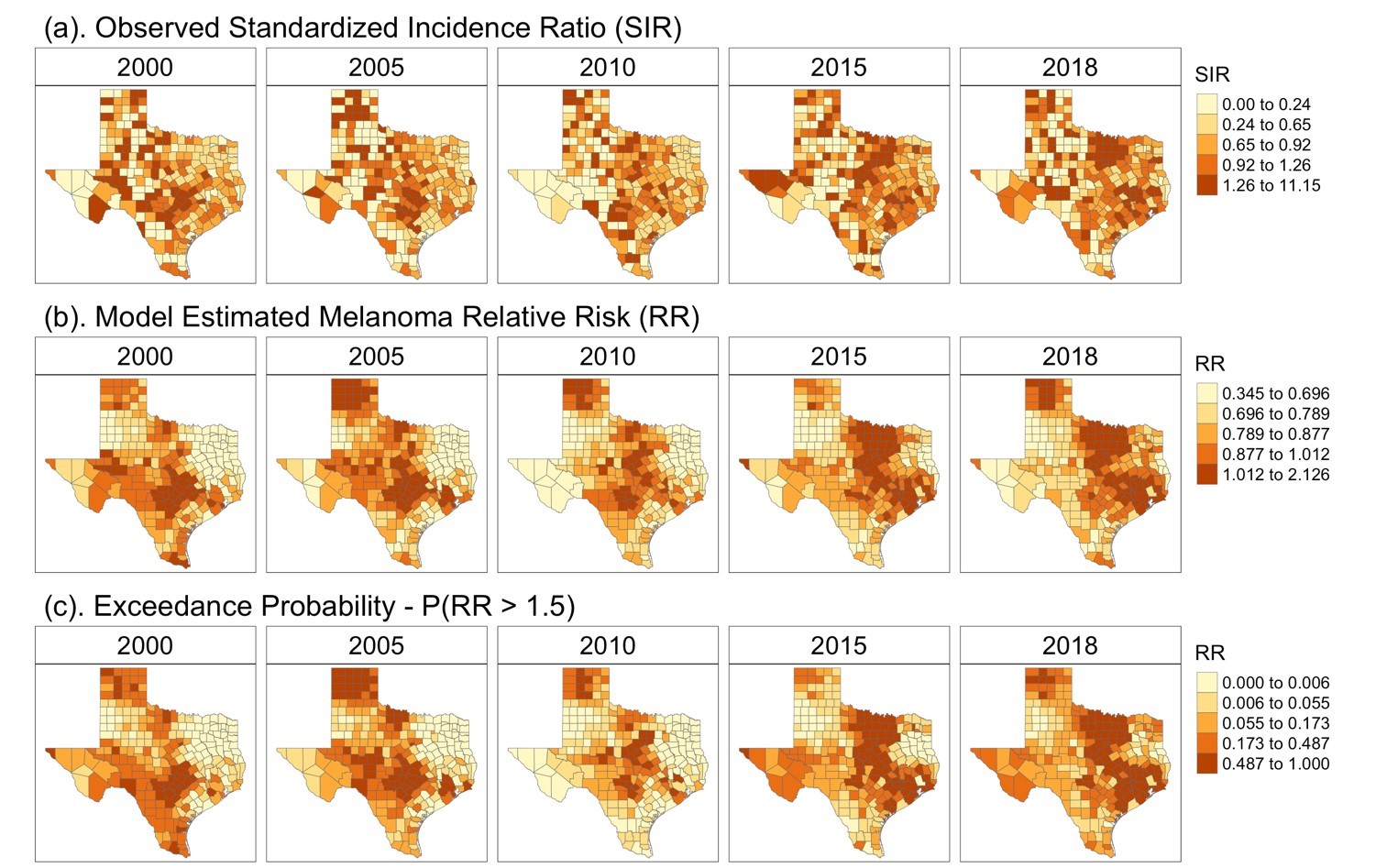
This project is funded by CPRIT RP230036 (MPI: Cici Bauer/Kelly Nelson). This project aims to use a data-driven approach to create statistical models that predict which areas may have the most late-stage melanomas in the future, and to identify the multi-level factors associated with late-stage diagnosis in Texas. We plan to identify primary care physicians (PCPs) in high melanoma burden areas who are interested in learning about skin cancer and deploy our multimodal educational intervention program – tailored to the social and community patient context – to clinical sites in those communities.
Predict to Prevent: Dynamic Spatiotemporal Analyses of Opioid Overdose to Guide Pre-emptive Public Health Responses (P2P):
Project link: https://reporter.nih.gov/search/3N0RMTkLh0iceaQeZ4jHfQ/project-details/10444263
Dashboard link: https://spatiotemporal-data-science.shinyapps.io/PredictToPrevent/
Publication link: https://publichealth.jmir.org/2023/1/e41450
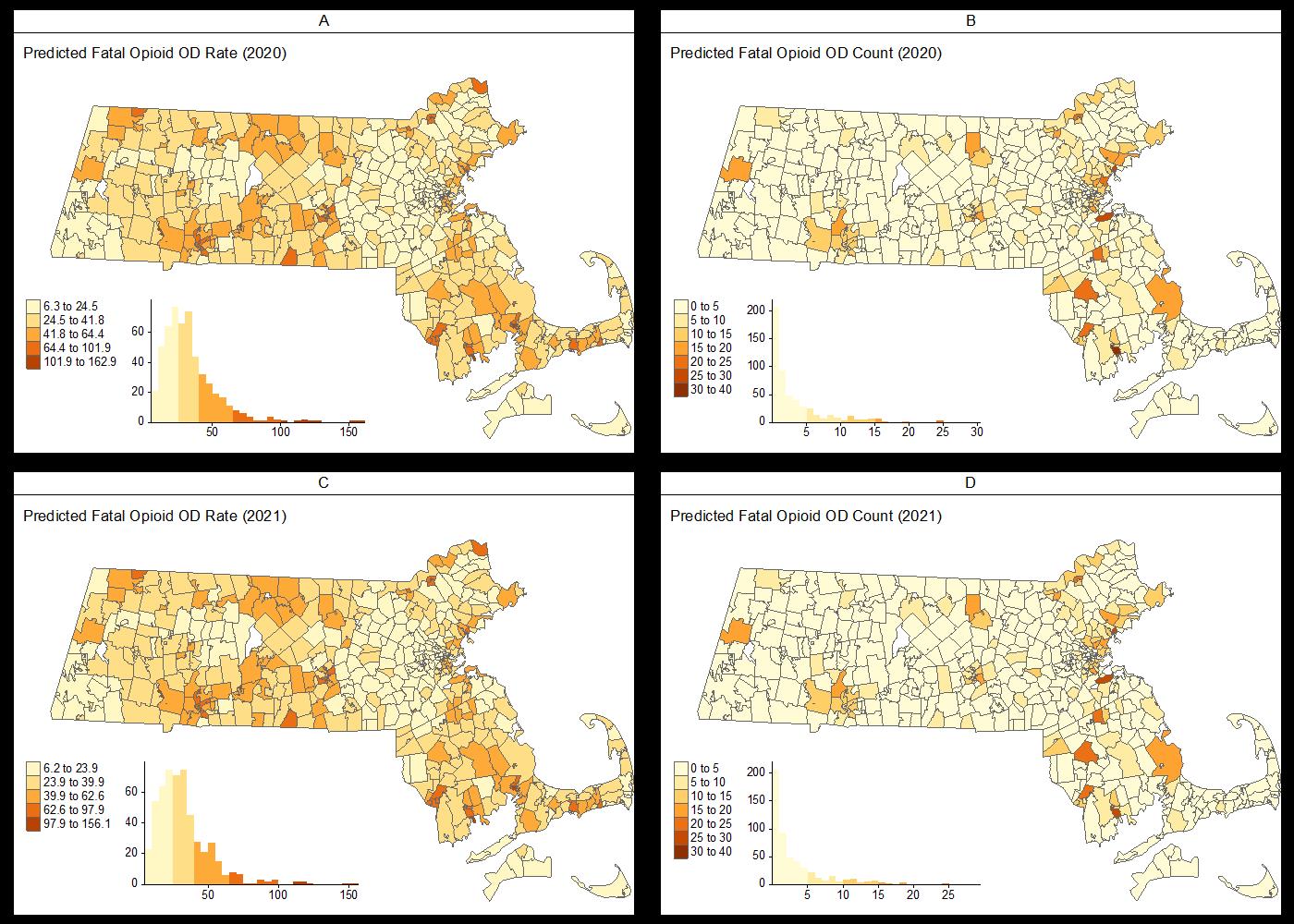
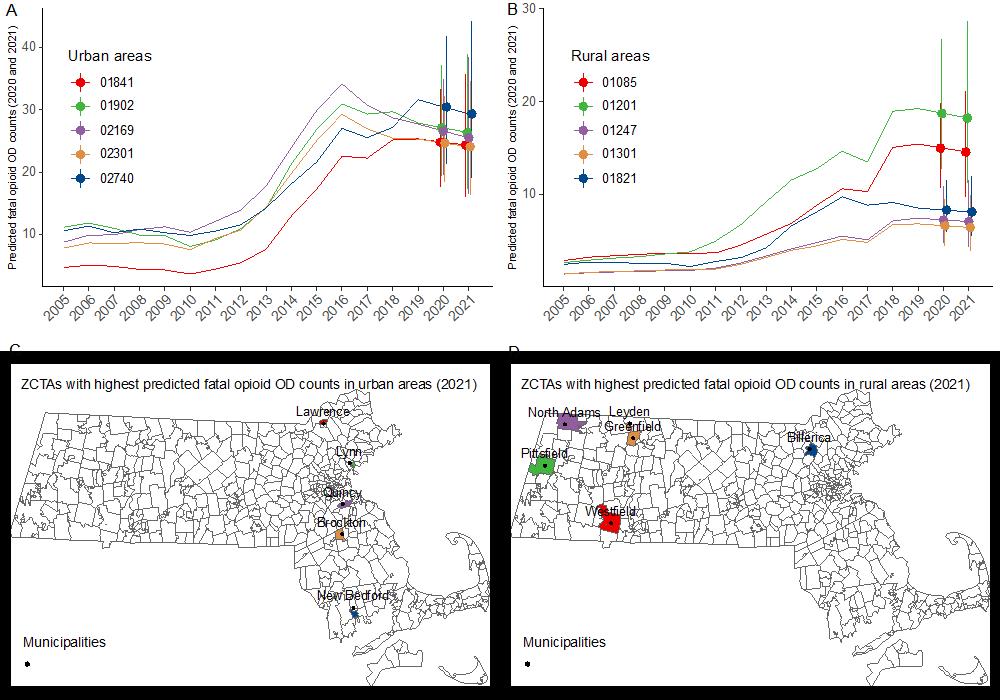
This project is funded by NIH R01DA054267-01A1 (MPI: Cici Bauer/Thomas Stopka). This project proposes to use a statewide Public Health Data Warehouse with a large number of linked administrative datasets to identify current opioid overdose patterns, predict future opioid overdose epidemics, and evaluate the effectiveness of public health and clinical interventions. Guided by the social ecological model, we plan to develop a comprehensive approach to identify individual, interpersonal, community and societal factors that contribute to opioid overdose, efficiently detect overdose hotspots, and develop dynamic forecasting models for timely prediction and prevention of future opioid overdose epidemics. We will disseminate blueprints, visualization tools, and code to other jurisdictions to facilitate replication of our approach.
TEPHI Wastewater-Based Epidemiology Project:
Publication link: https://www.nature.com/articles/s41467-023-42064-1
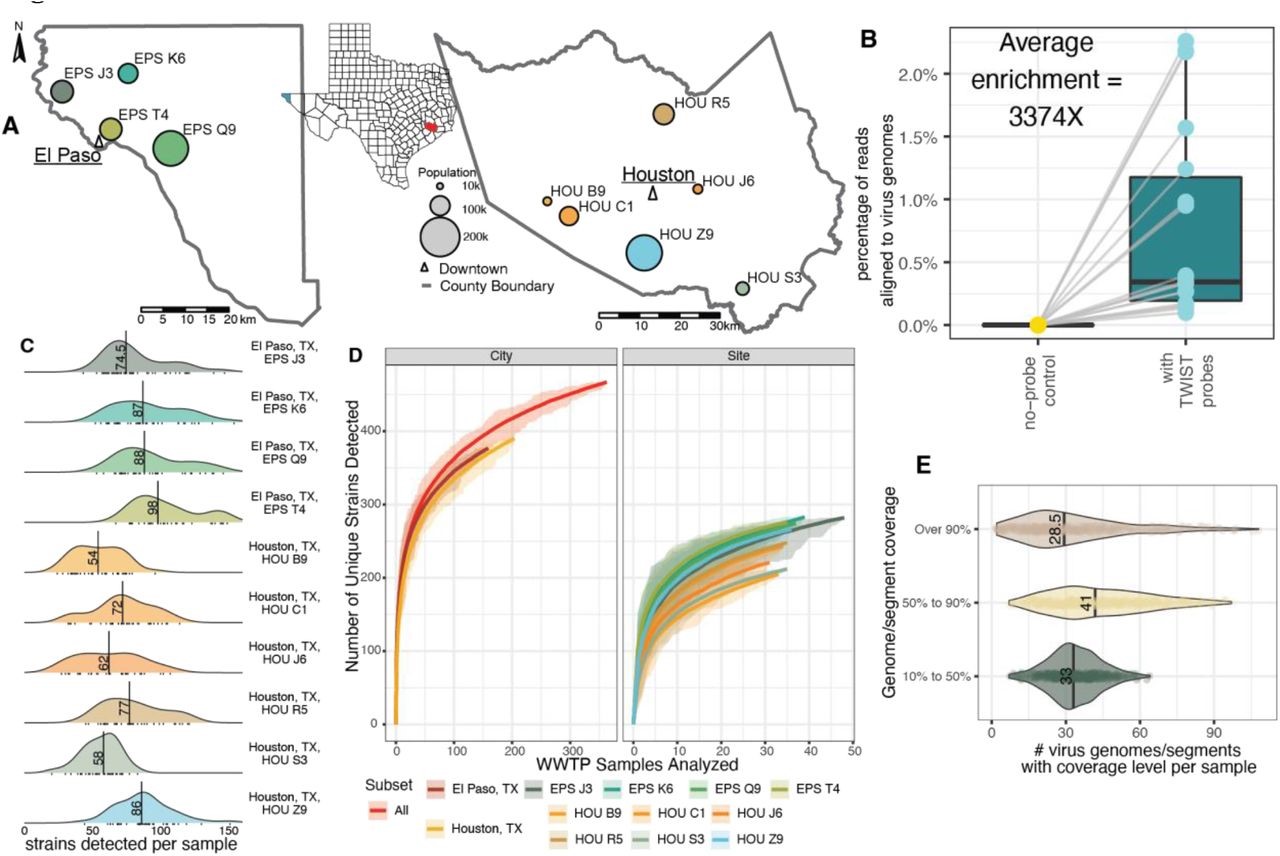
This project is funded by Texas Epidemic Public Health Institute (TEPHI) https://tephi.texas.gov/. This research area delves into the epidemiology of various infectious diseases, emphasizing their prevalence, risk factors, and associated health outcomes. It particularly highlights the innovative use of wastewater surveillance as a potent tool for monitoring and understanding the dynamics of infectious diseases within communities. This approach allows for the timely detection of disease prevalence and the identification of emergent health threats, ultimately aiding in the formulation of effective and responsive public health strategies and interventions.
Spatial Homogeneity Learning Models with Applications to Socioeconomic Problems:
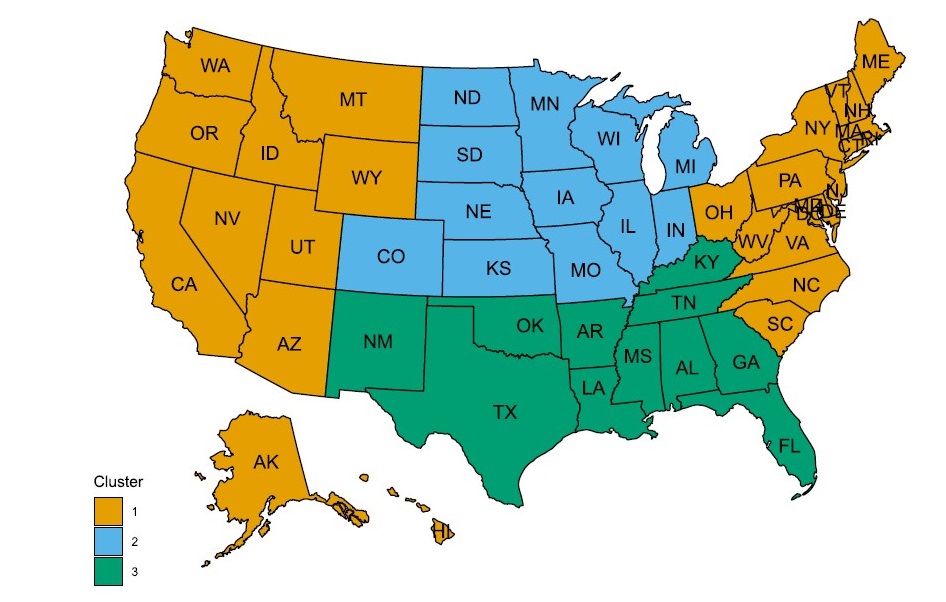
This project is funded by NSF-SBE 2243058 (PI: Guanyu Hu). This project aims to develop a geographically adaptive concave fusion penalized (GACP) learning method to estimate model parameters and recover latent memberships simultaneously. This project will advance the frontiers of spatial heterogeneity learning, benefitting regional economic policy and other complex socioeconomic problems.
Bayesian Learning for Spatial Point Processes: Theory, Methods, Computations, and Applications:
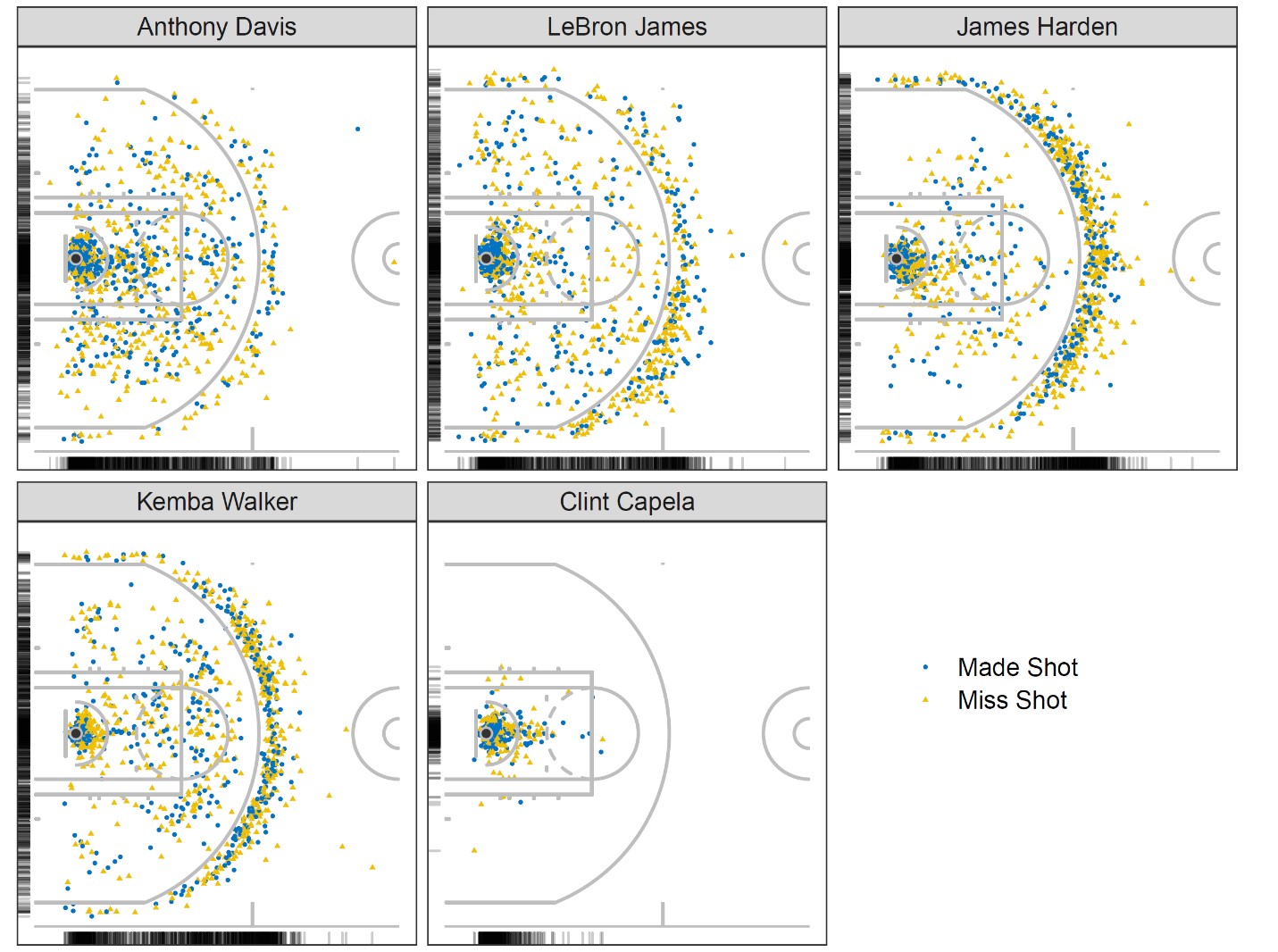
This project is funded by NSF-DMS 2210371 (PI: Guanyu Hu). The primary aim of this project is to develop theories, methods, and computing algorithms for spatial point pattern data from various applications through a nonparametric Bayesian framework. We will fill the gap between nonparametric Bayesian methods and spatial point process, including intensity estimation and heterogeneity learning for univariate and multivariate processes. The applications of the proposed methods vary from environmental science, social science, and sports analytics.
Faculty
Cici Bauer, PhD
Associate Professor, Center Director
Department of Biostatistics and Data Science
[email protected]
Qian Xiao, PhD, MPH
Associate Professor
Department of Epidemiology
[email protected]
Yun Hang, PhD
Assistant Professor
Environmental & Occupational Health Sciences
[email protected]
Hao Feng, PhD
Associate Professor
Department of Biostatistics and Data Science
[email protected]
Staff
Porsha V. Day, MPA
Center Administrator
[email protected]
Kehe Zhang, MS
Biostatistician
[email protected]
Jocelyn Hunyadi, MPH
Biostatistician
[email protected]
Thuy Nguyen, MS
Biostatistician
[email protected]
Nico Reger, MS
Biostatistician
[email protected]
Ka-hyon 'Iris' Cho, MPH
Biostatistician
[email protected]
Wen Tang, PhD
Biostatistician
[email protected]
Jiahao Cao, PhD
Postdoctoral Research Fellow
[email protected]
Erika Figueroa-Solis, DrPH
Postdoctoral Research Fellow
[email protected]
Meina Zhang, PhD
Postdoctoral Research Fellow
[email protected]
"Alone we can do so little, together we can do so much" - Helen Keller
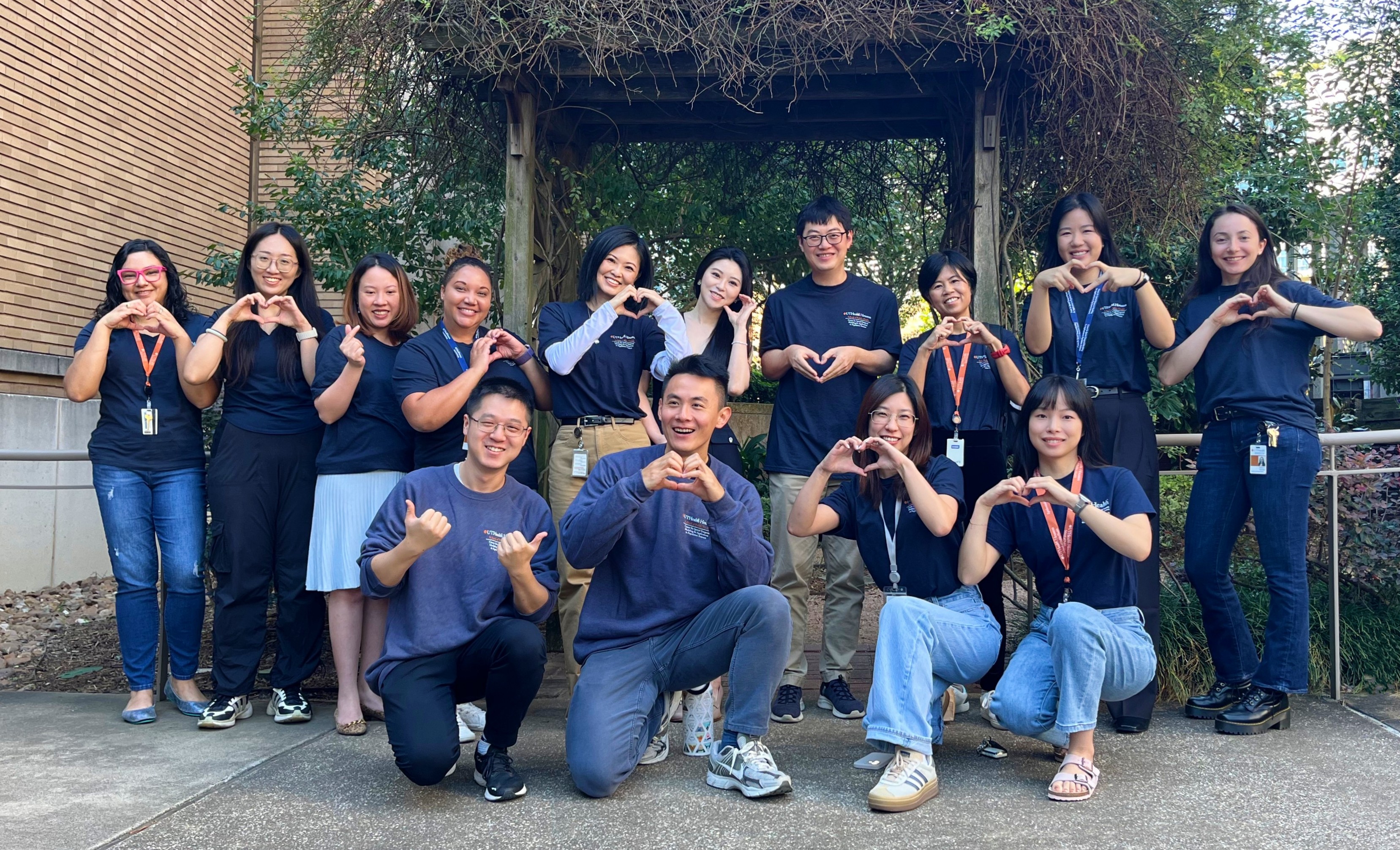
~Appreciation to all our collaborators and stakeholders—your commitment fuels our shared success~
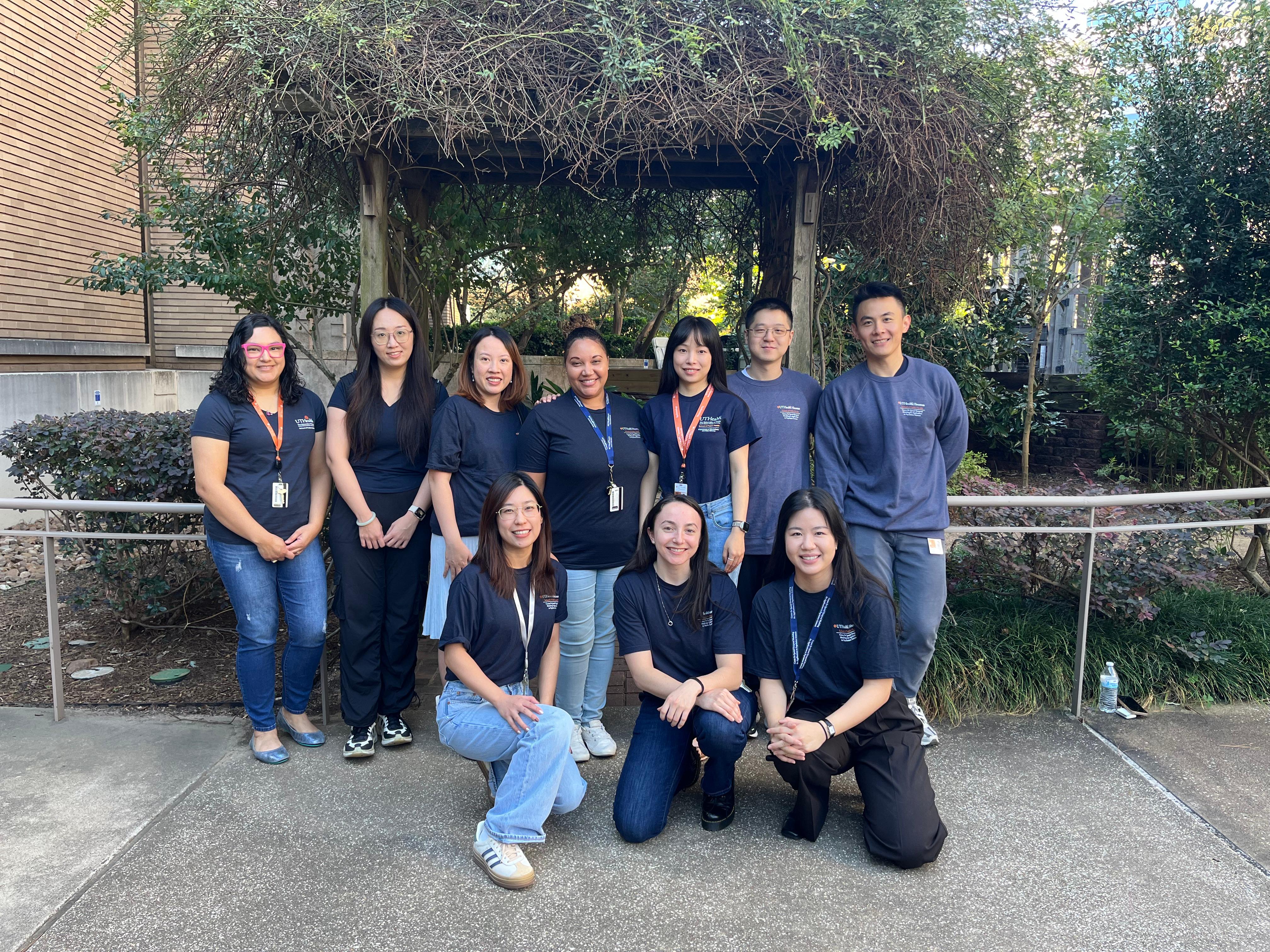
"Great discoveries and improvements invariably involve the cooperation of many minds." - Alexander Graham Bell
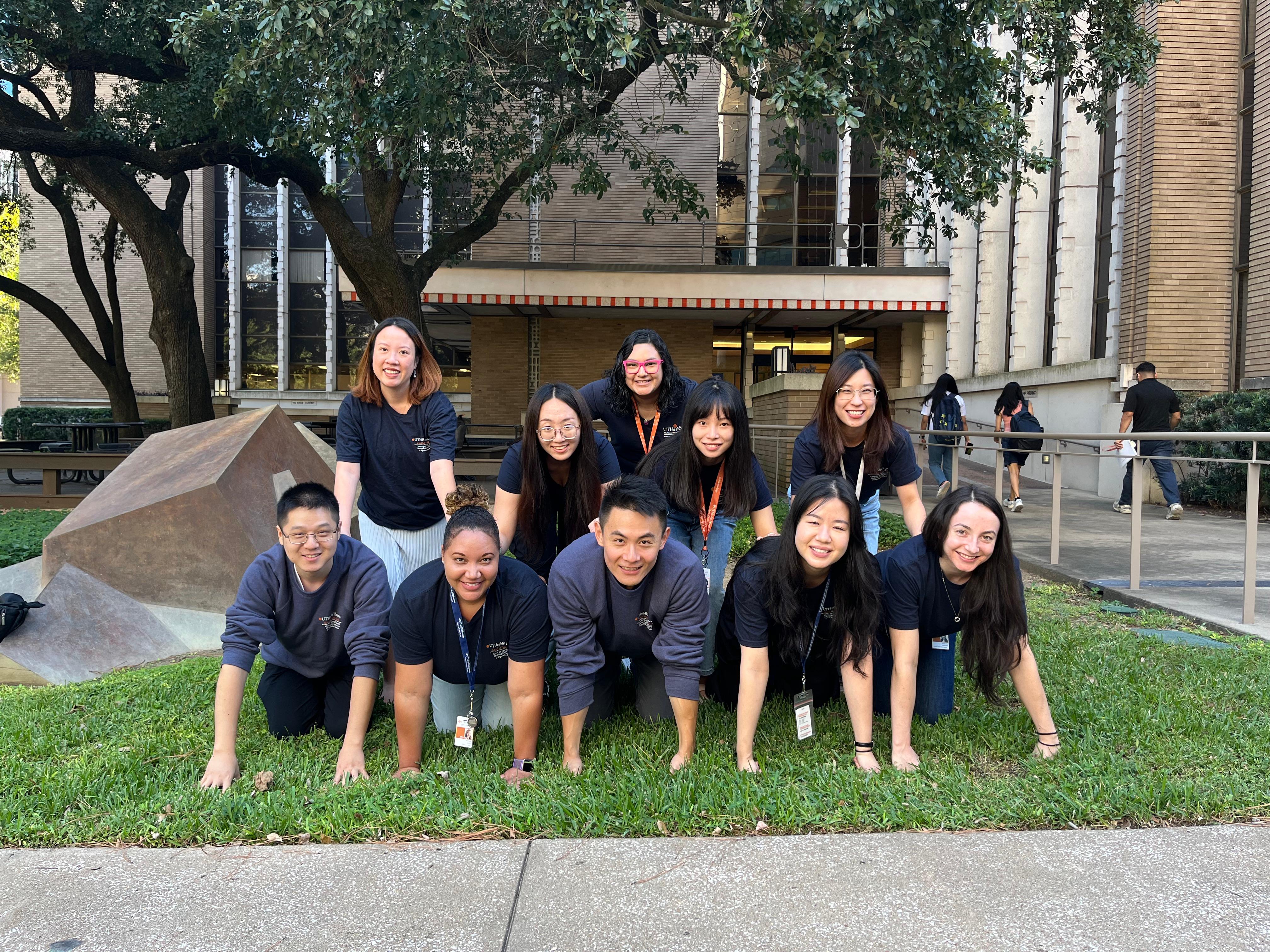
NEWS UPDATE
TEX-SIM Core Facility Awarded CPRIT Funding
We are thrilled to share that our proposed core facility, the Texas Spatial-Temporal Data Science, Informatics, and Modeling Core Facility (TEX-SIM) has been selected for funding by CPRIT. This award will support the development of a new core facility focused on advancing spatial-temporal data science, informatics, and modeling to address cancer-related population health challenges across Texas.
Cancer affects everyone, but some communities face a heavier burden due to socioeconomic challenges, environmental risks, limited healthcare access, and geographic isolation. TEX-SIM is designed to address these challenges by providing advanced data analytical tools and informatics tailored to the diverse needs of Texas communities. The facility will integrate data on environmental exposures, georeferenced health information, and healthcare access metrics to uncover how these factors influence cancer risk, treatment, and outcomes. It will address all types of cancers, with a particular focus on those disproportionately affecting disadvantaged communities, identifying their unique characteristics and needs.
Unlike traditional approaches centered on individual patients, TEX-SIM emphasizes community-level health trends by developing customized community profiles that offer actionable insights to reduce disparities and promote equity. Researchers and stakeholders will benefit from customized community profiles, which identify local drivers of cancer-related health disparities, empowering them to make informed decisions and develop targeted interventions.
Through innovative analytics, platforms, and real-time data dashboards, TEX-SIM will foster collaboration and provide training programs to expand expertise in spatial-temporal data science, informatics, and modeling. By equipping communities and researchers with actionable insights, TEX-SIM aims to transform cancer prevention, control, and care in Texas, ensuring every community has the tools and resources needed to achieve better cancer-related health outcomes. This core facility represents a vital step toward reducing the cancer burden and achieving health equity statewide for all Texans.
For more information about the new TEX-SIM project, please visit https://sph.uth.edu/projects/tex-sim/.
UTHealth Houston Student Partners with Mentor to Win NASA Future Investigators Award
August 07, 2025
Congratulations to Dr. Yun Hang, assistant professor at UTHealth Houston School of Public Health and primary faculty affiliate of CSMAPS for her outstanding mentorship in guiding PhD student Aodong Mei to win the prestigious NASA FINESST award—marking a first for the university. Under Dr. Hang’s mentorship, Mei’s groundbreaking research proposal, which integrates satellite remote sensing and AI to study the links between air pollution and influenza transmission, was one of only 55 selected from 565 submissions. This achievement not only reflects Dr. Hang’s commitment to cultivating innovation and interdisciplinary thinking among his students but also underscores her role in shaping the future of public health research at the intersection of environmental health and space technology.

Photo: Dr. Yun Hang
Link to full news article can be found here.
Past Events
2024 Symposium on Spatial-Temporal Data Science for Population Health
Date: March 1, 2024
Time: 9:00am - 4:00pm
Location: Cooley Center, 7440 Cambridge St, Houston, TX 77054
Review the full agenda and list of speakers.
Recap
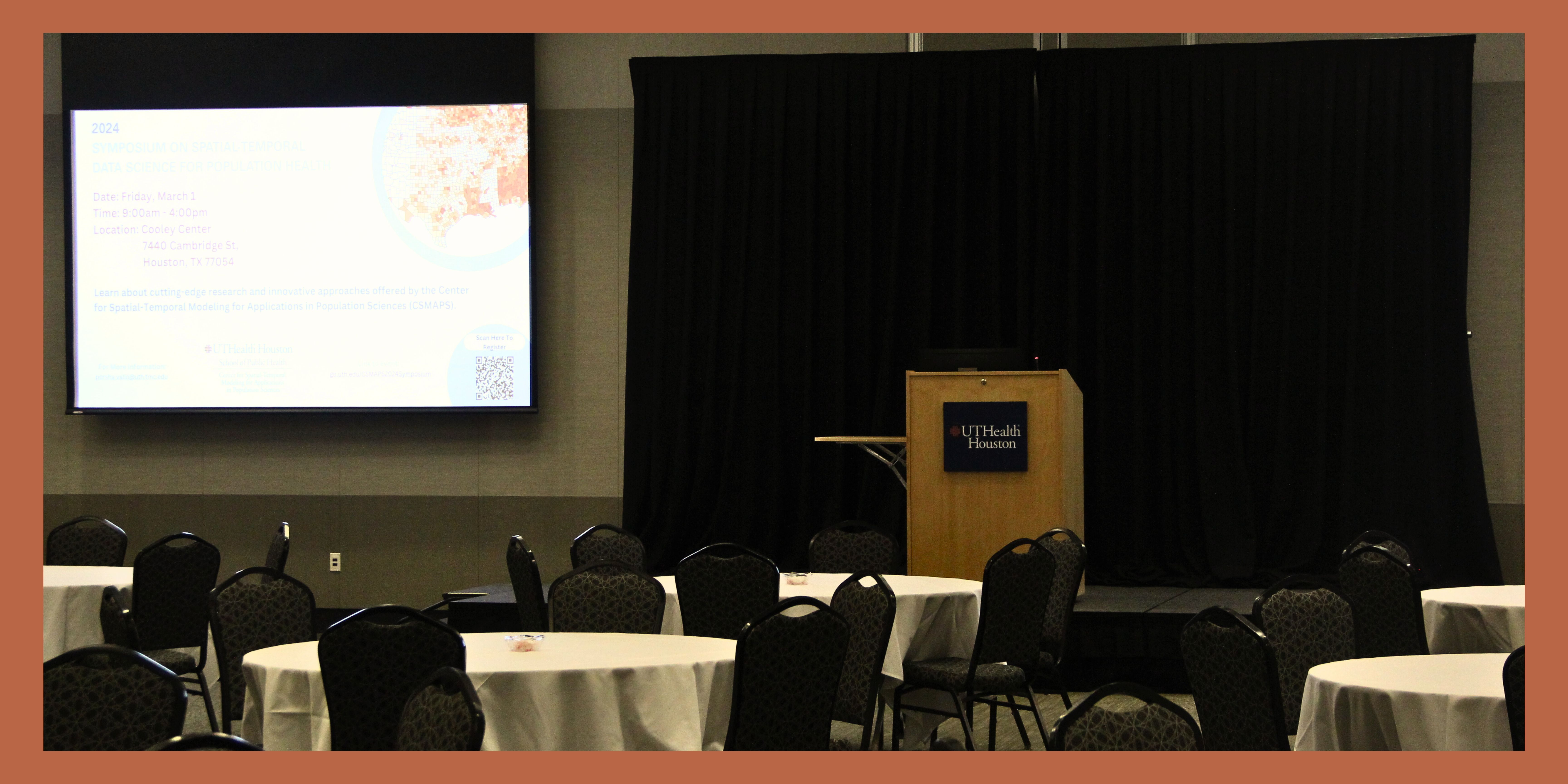
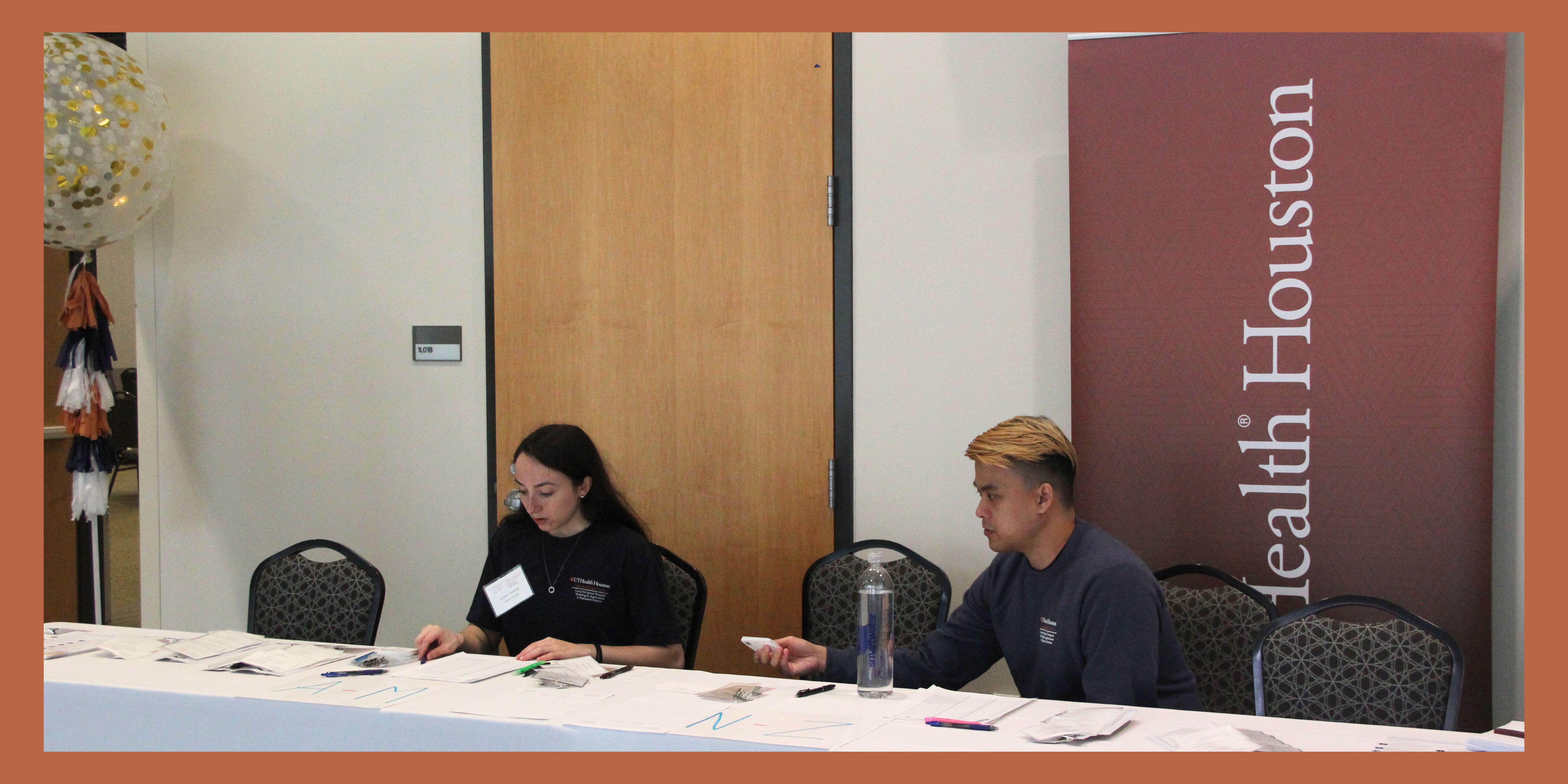

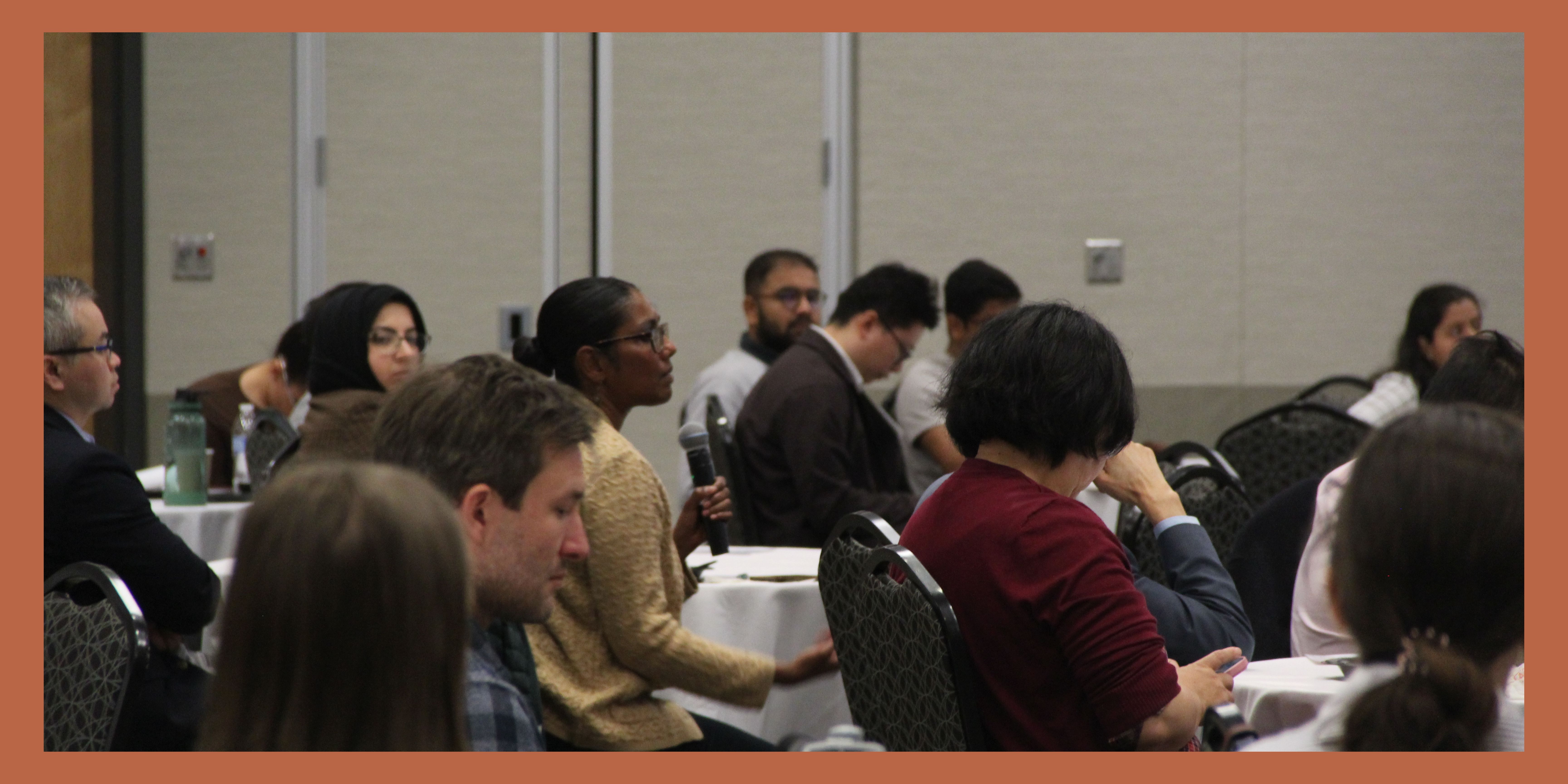
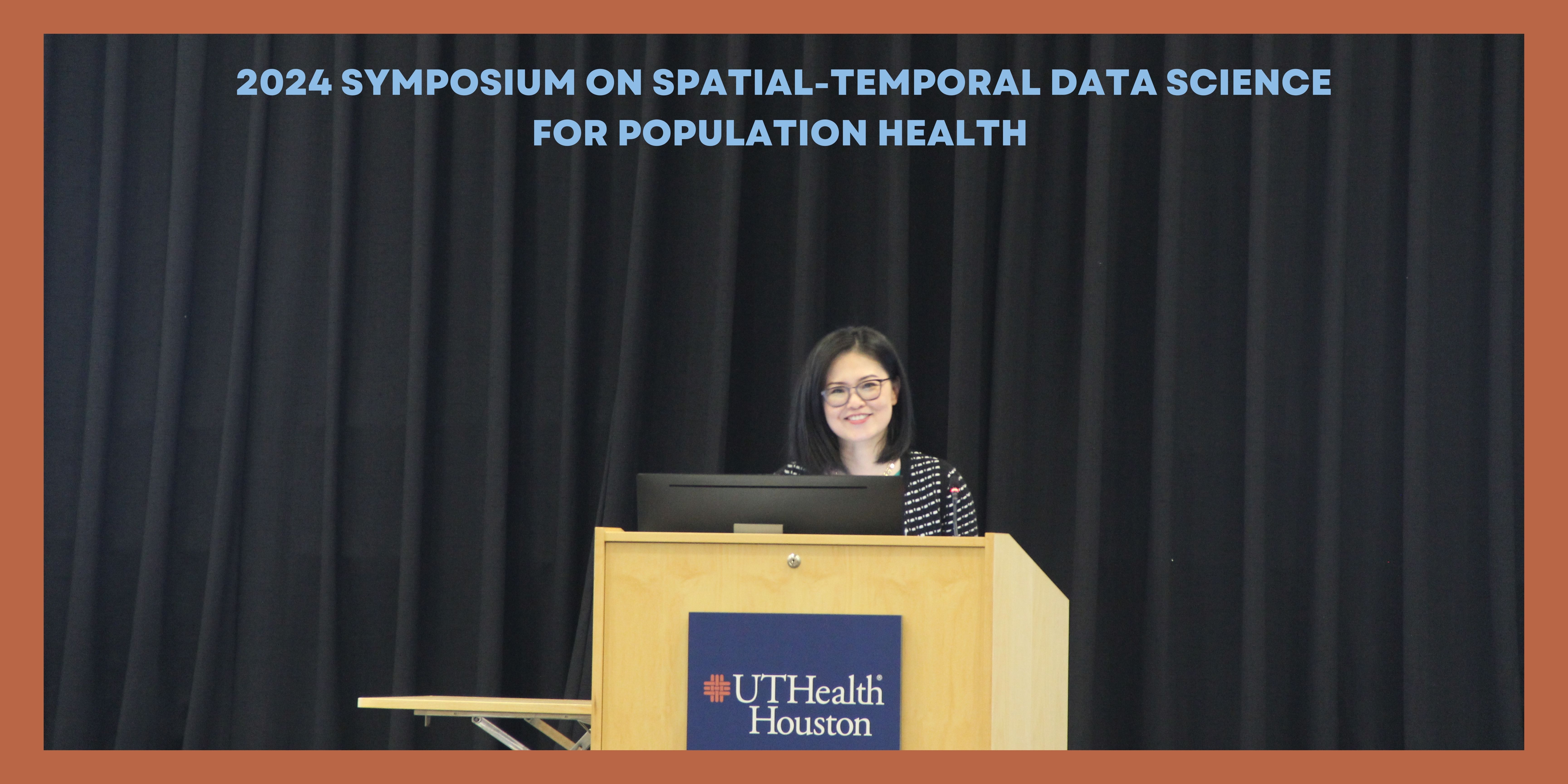
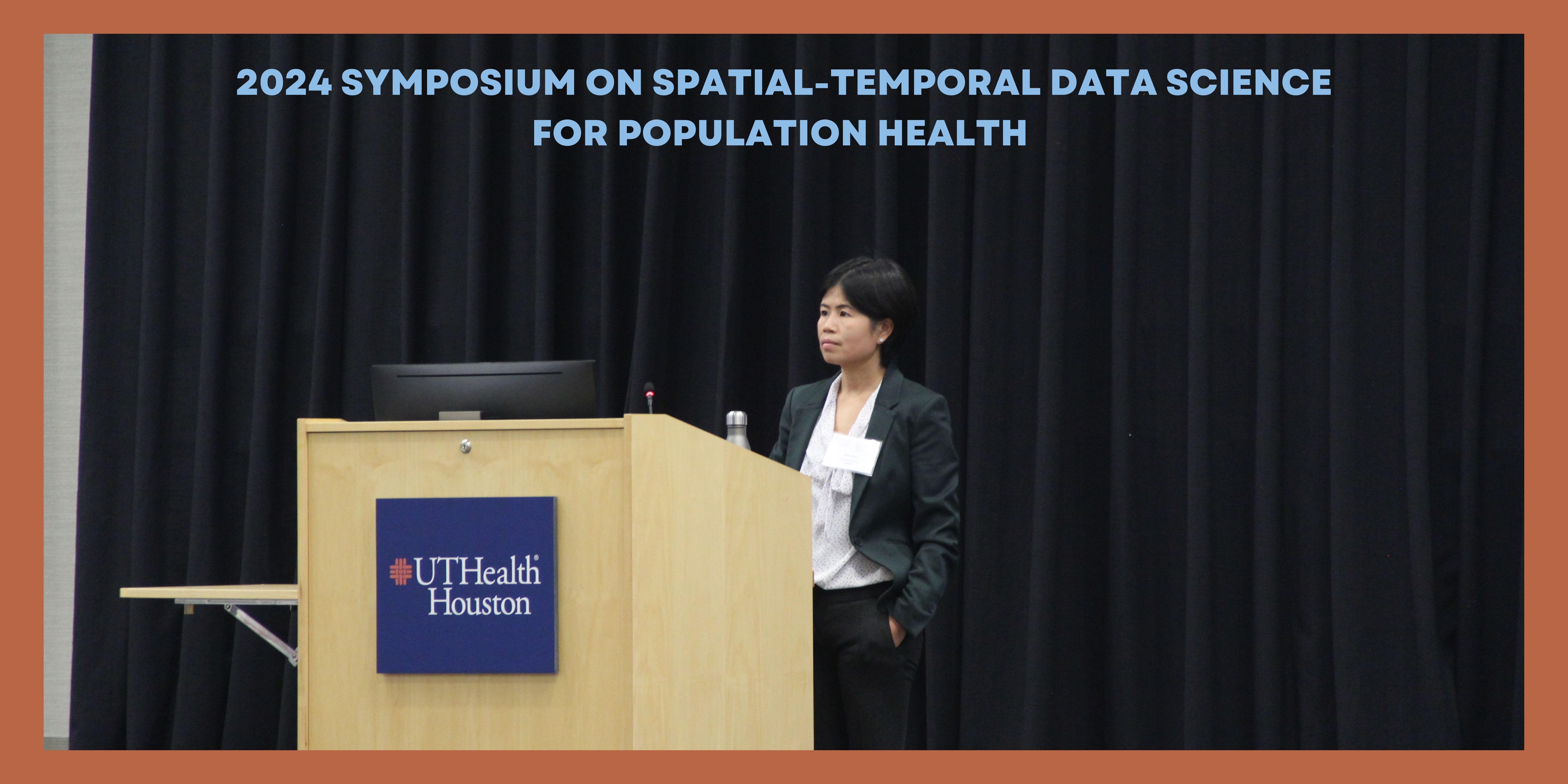
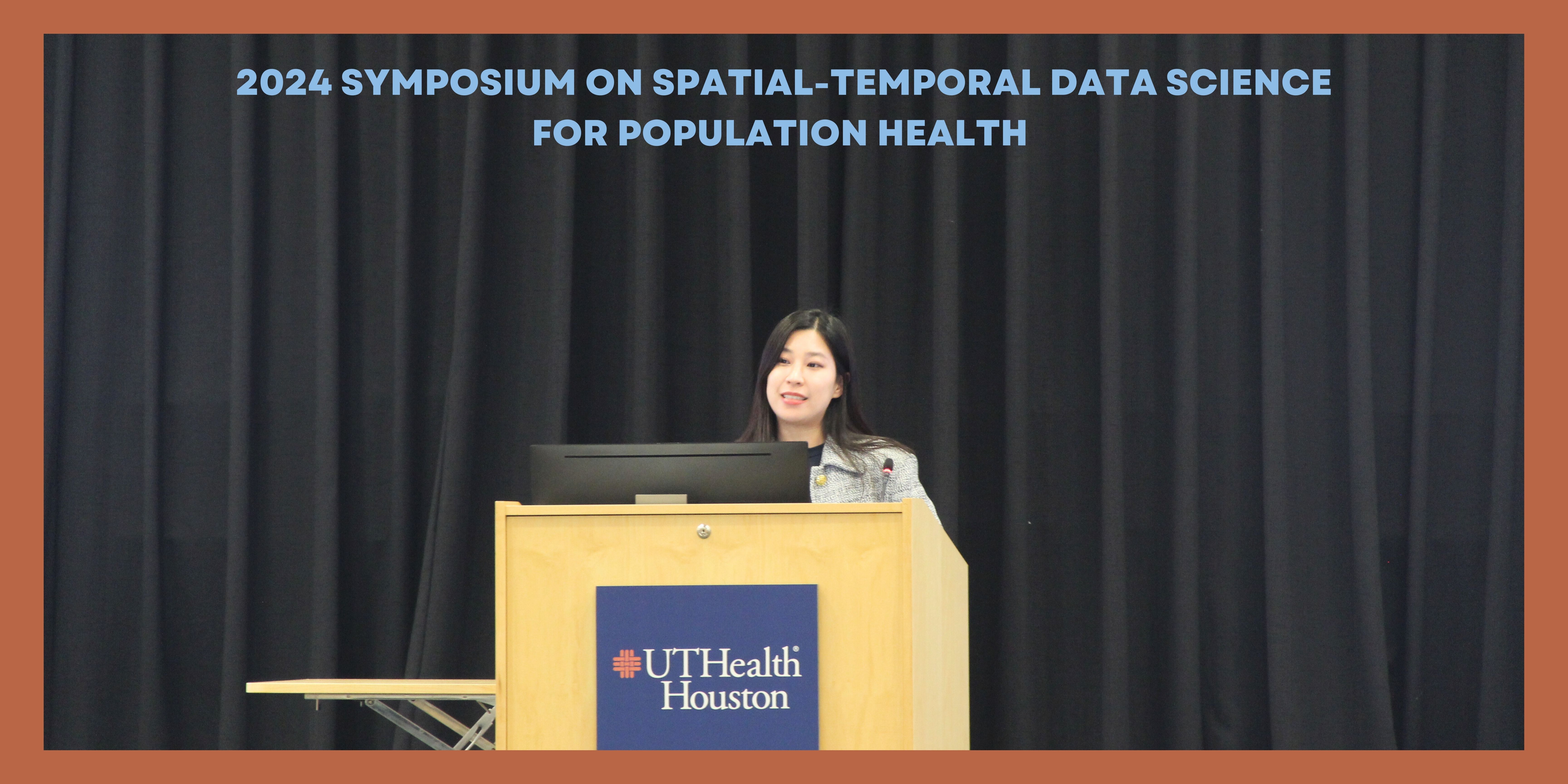
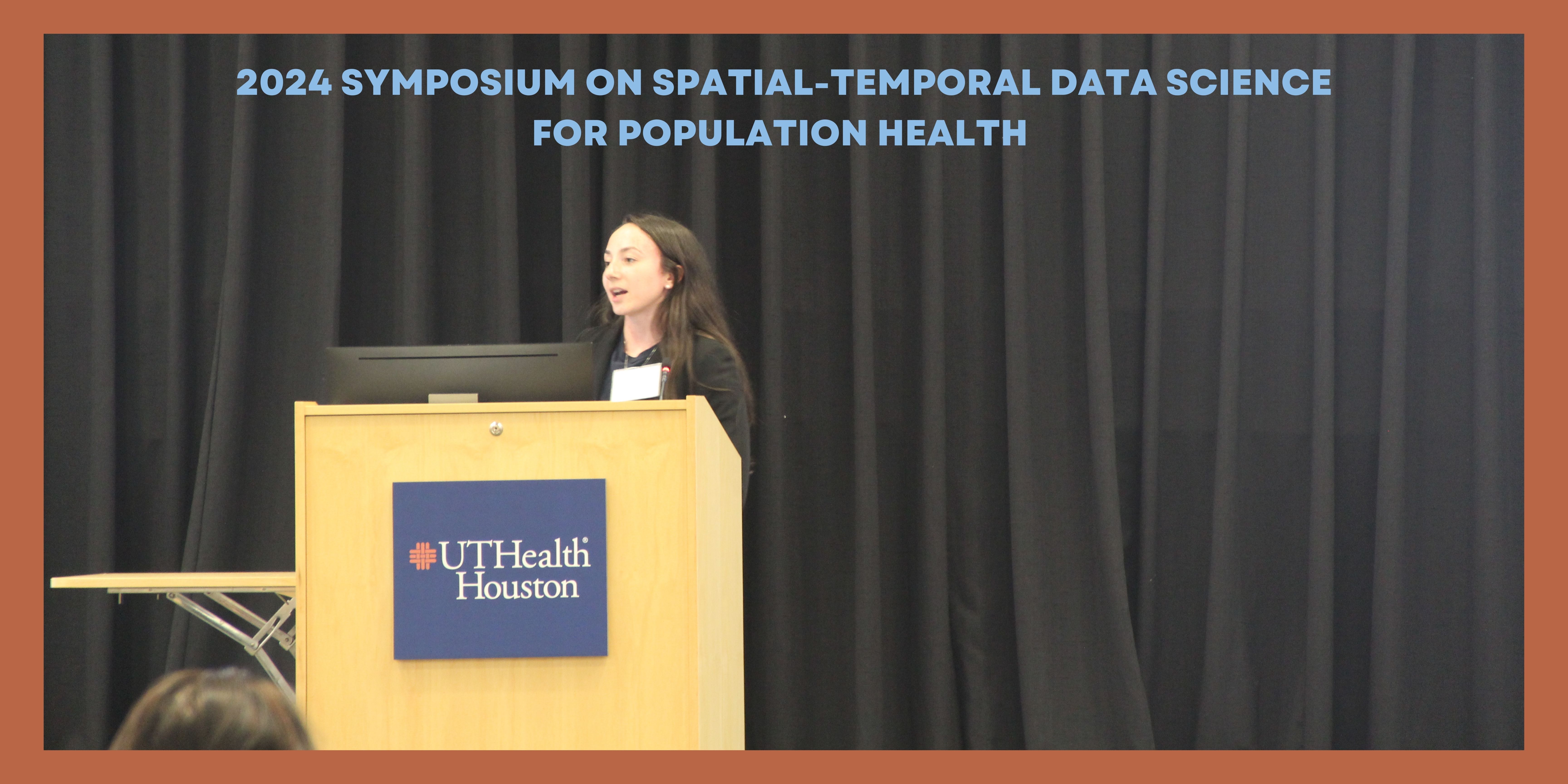
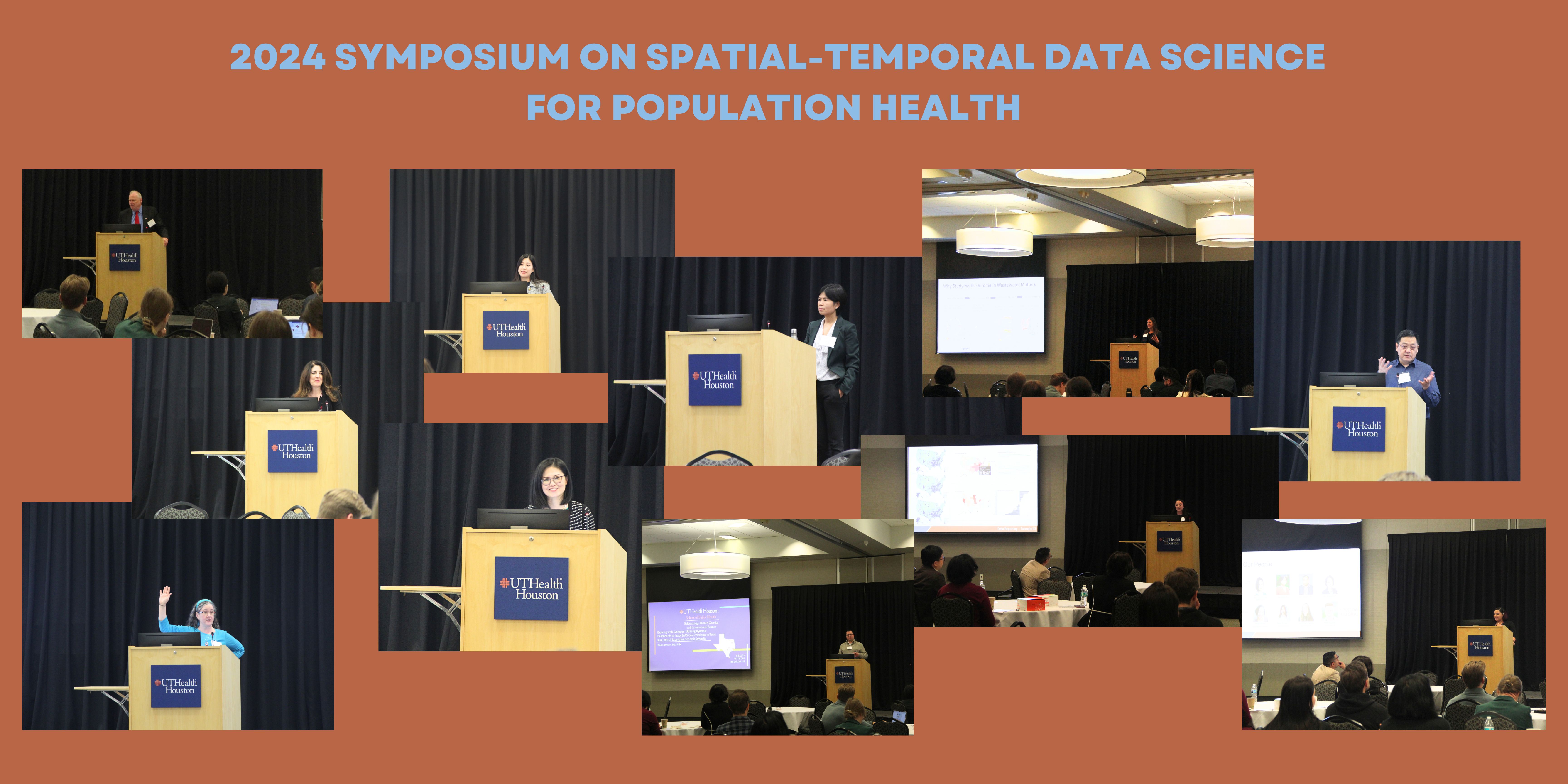
We would like to extend a very special thank you to everyone who were able to attend our center's first symposium! As well as, all of the speakers and vendors who contributed to it's success!
Interested in collaboration opportunities, please contact [email protected].
Post-Event Anonymous Quotes
What were your key take aways from this event?
“Geospatial analyses are used in a wide array of PH fields and have many applications, which is very encouraging.”
“Spatial-Temporal can be applied to many research field like cancer.”
What was your biggest takeaway from the event?
“CSMAPS is awesome.”
Is there anything else you would like us to know?
“It was great overall and very helpful. I liked the way it was organized and topics.”
Featured News Update
University researchers receive more than $5 million from CPRIT
Cici Bauer, PhD, associate professor of Biostatistics and Data Science and the James W. Rockwell Professor in Public Health (Preventive Medicine and Epidemiology) at UTHealth Houston School of Public Health, was awarded nearly $3 million to establish the Texas Spatial-Temporal Data Science, Informatics, and Modeling Core (TEX-SIM). She is supported by team leads Qian Xiao, PhD associate professor of Epidemiology and Hongfang Liu, PhD professor of McWilliams School of Biomedical Informatics, Director of the Center for Translational Excellence of AI in Medicine, and Vice President of the Learning Health System.


